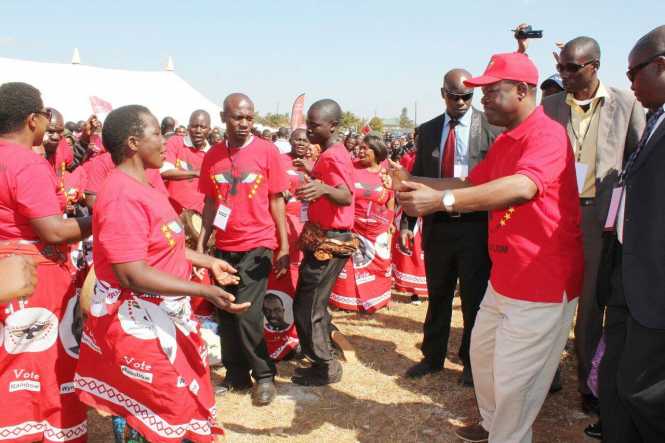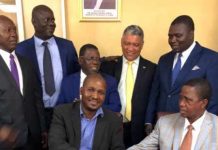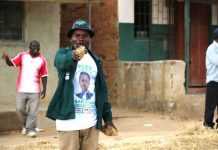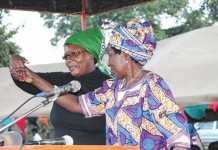Rainbow Party :
REVIEW OF THE POLICY OF NON-PARTICIPATION AND THE ISOKA VICTORY IN KAPILILONGA WARD BY-ELECTION.
When the Rainbow Party was formed in December 2014, the Steering Committee took a policy position of non-participation in any local government or parliamentary by-elections until 2016 when presidential and general elections are held in the country. The reasons in support of this policy were:
(i) To allow for the mobilisation of the party country wide.
(ii) To maximise the use of time and financial resources to mobilise the party.
(iii) To build and strengthen the party on the ground.
From January, 2015, to August 2015, 7 parliamentary by-elections have taken place, all of which the PF won. These by-elections were mainly a two-horse race between PF and UPND despite the participation by other political parties like FDD, NAREP, MMD etc. The PF consequently mounted an aggressive propaganda campaign against the Rainbow Party as being a political party which existed only on paper and hence its non –participation in these by-elections to test its popularity. This propaganda was beginning to gain momentum and became a real threat to the Rainbow Party’s mobilisation and recruitment drive, the very reason for non-participation.
When the Bangweulu parliamentary seat fell vacant following the death of Chifita Matafwali, ECZ set 06th August, 2015, as the date for the by-election. This was to be held together with 4 local government by-elections in Kasama, Mambwe and Isoka Districts. The Kapililonga Ward seat fell vacant when Moses Simwanza who was the PF councillor and council chairman joined the Rainbow Party. He applied to re-contest the seat against the Party’s existing non-participation policy.
Although both the party’s National Planning and Finance Committee and the Central Committee were apprehensive about the prospects of participation, it was resolved by the Central Committee that Cde. Simwanza’s application be approved and that similar applications in future be considered on a case-to-case basis. The review of the non-participation policy by the Central Committee at such a time was, therefore, a major and courageous decision by the party. Nobody could predict the outcome of the election except to underline the view that a loss would no doubt demoralise the rank and file of the party and inevitably affect the impetus of the mobilisation programme. The other view held that whichever way the election would go, it would still offer lessons, positive or otherwise on the field practicalities of the mobilisation strategies being designed by the party for use in 2016.
Against what had become the general perception of a PF/UPND two-horse race election pattern since January, 2015, the election in Kapililonga Ward became a race between PF and Rainbow Party instead, with FDD and UPND in the third and fourth position respectively. The Rainbow Party beat PF, scooping the seat with 512 against 446 votes. This was a historic day for the Rainbow Party. There was euphoria within the party across the country and supporters congratulated the party on this momentous victory. The discourse and debate generated on social media went on for days on end as bloggers tried to understand and discern what this election result meant under the existing political landscape and the future of individual political parties as the country drifted towards the 2016 presidential and general elections. For the Rainbow Party and its leadership, one thing was clear, the party was on course and the future held a promise.
“UNITED WE CAN!”

 JOIN DRIVERN TAXI AS PARTNER DRIVER TODAY!
JOIN DRIVERN TAXI AS PARTNER DRIVER TODAY!











